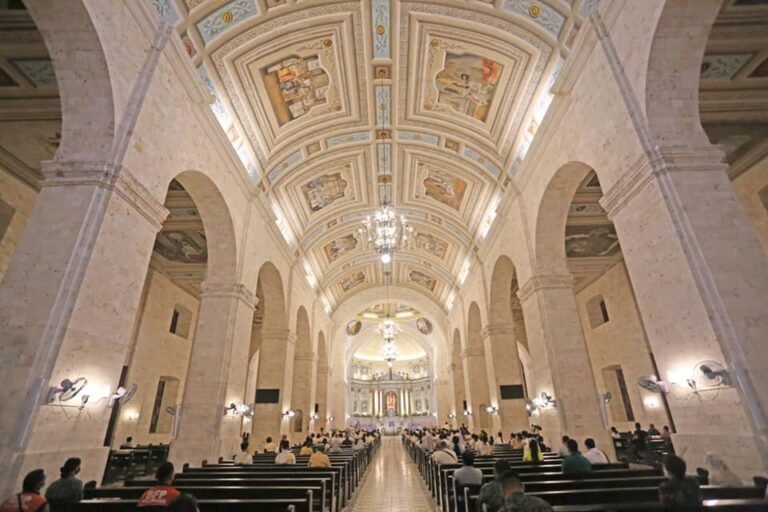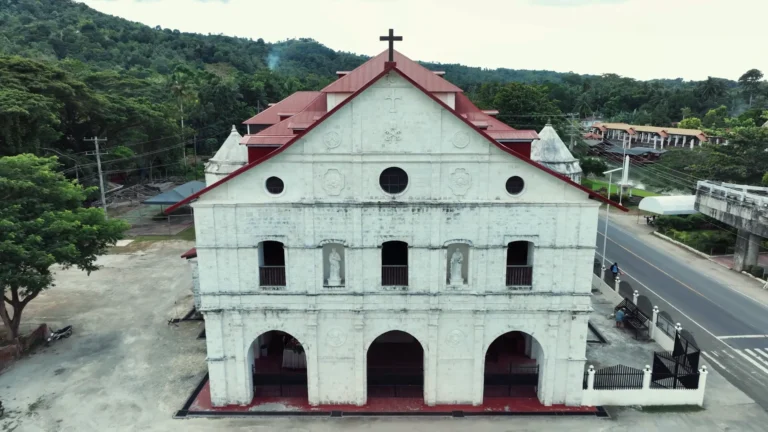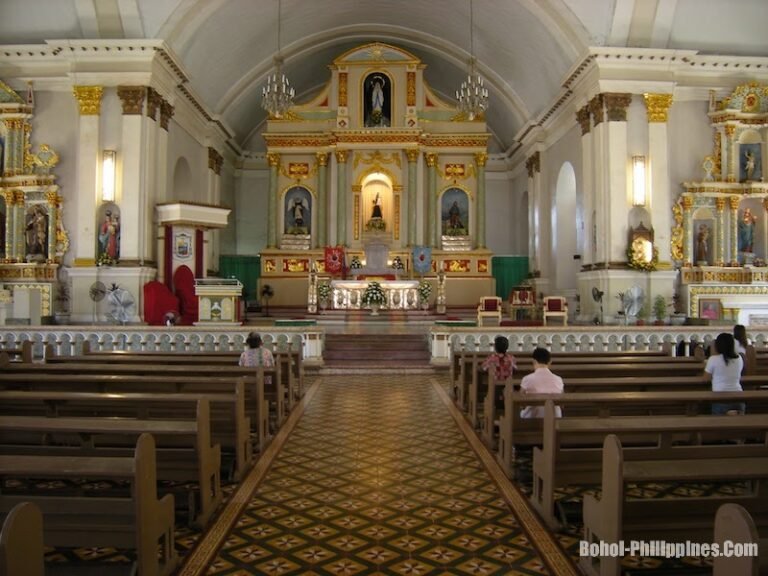Bohol, a captivating province in the Philippines, is a treasure trove of history, culture, and natural beauty. Its historical sites, from centuries-old churches to ancestral homes, narrate tales of precolonial life, Spanish colonization, and heroic resistance. Complementing these landmarks are vibrant festivals and traditions that showcase Bohol’s rich cultural heritage. This guide delves into the province’s storied past, architectural marvels, and cultural vibrancy, offering a comprehensive overview for travelers eager to explore Bohol’s historical and cultural gems.
History of Bohol
Bohol’s history is a vibrant tapestry woven from indigenous roots, colonial influences, and resilient struggles. Precolonial Boholanos thrived as traders and farmers, fostering a distinct culture evident in archaeological finds like pottery and tools. The arrival of Spanish colonizers in the 16th century introduced Christianity and left an enduring legacy in the form of coral stone churches and fortified structures. The 18th-century Dagohoy Rebellion, led by Francisco Dagohoy from 1744 to 1829, stands as one of the longest revolts against Spanish rule, symbolizing Boholano defiance. The 20th century brought American and Japanese occupations, with Boholanos playing key roles in the Philippine Revolution and World War II resistance. Today, museums, heritage sites, and festivals preserve this multifaceted history, inviting visitors to explore Bohol’s enduring spirit.
Historical Sites and Landmarks
Bohol’s historical landmarks are architectural and cultural treasures, each offering a window into the province’s past. Below are key sites, enriched with historical and architectural details:
Blood Compact Shrine
Located in Tagbilaran City, the Blood Compact Shrine commemorates the 1565 Sandugo, the first recorded treaty of friendship between Spanish explorer Miguel López de Legazpi and Bohol chieftain Datu Sikatuna. The bronze monument, set against the backdrop of the Bohol Sea, depicts the ritual where both leaders mixed their blood in wine, symbolizing unity. This site underscores Bohol’s early role in intercultural diplomacy.
Baclayon Church
The Church of Our Lady of the Immaculate Conception in Baclayon, built in 1717, is one of the Philippines’ oldest stone churches and a UNESCO World Heritage Site. Constructed from coral stone with a Baroque-style retablo, it blends Spanish and Filipino architectural elements. Despite damage from the 2013 earthquake, restoration preserved its intricate frescoes and museum, which houses relics like gold-embroidered vestments and the Baclayana Mass.
Loboc Church
The Church of San Pedro in Loboc, dating to 1602, is a masterpiece of Jesuit architecture with Gothic, Moorish, and Baroque influences. Its ceiling murals and antique icons are highlights, and the adjacent Loboc Museum showcases regional artifacts. Situated near the Loboc River, the church is also famous for the Loboc Children’s Choir, adding a cultural dimension to visits.
Dauis Church
The Church of Our Lady of the Assumption in Dauis, built in the 17th century, features a coral stone facade with Gothic and Romanesque elements. Its seaside location and miraculous well, believed to have healing properties, draw pilgrims. The church’s frescoed ceilings and restored structure post-2013 earthquake make it a must-visit for heritage enthusiasts.
Panglao Watchtower
In Panglao, this 18th-century coral stone watchtower served as a lookout against pirate attacks. Its sturdy design and panoramic views of the coastline highlight Bohol’s maritime defenses. The tower’s weathered charm offers a tangible connection to the island’s colonial past.
Bohol Provincial Capitol
Located in Tagbilaran City, the early 20th-century Bohol Provincial Capitol is a neoclassical gem with a central dome and colonnades. As the seat of provincial governance, it reflects Bohol’s administrative history and architectural elegance, making it a significant civic landmark.
Clarin Ancestral House
In Loay, the Clarin Ancestral House (1840) showcases Filipino-Spanish architecture with its nipa roof, hardwood floors, and high-vaulted hall. Home to the prominent Clarin family, it preserves memorabilia and offers insights into 19th-century Boholano life.
Cultural Heritage
Bohol’s cultural heritage is a vibrant blend of indigenous, Spanish, and modern influences, expressed through festivals, crafts, and traditions. The Sandugo Festival in July reenacts the 1565 Blood Compact with street dancing, parades, and cultural performances, celebrating Bohol’s historical unity. The Ubi Festival in January honors the purple yam, a sacred crop, with agricultural displays and culinary showcases. Traditional music, featuring instruments like the kudyapi and agung, and dances like Kuradang and Tinikling, enliven festivities. Boholano crafts, such as bamboo basketry, rattan weaving, and pottery, reflect local artistry, while culinary traditions like calamay and Peanut Kisses highlight the province’s gastronomic heritage. Community efforts, including museums and cultural centers, ensure these traditions thrive.
Historical Events
Bohol’s history is marked by pivotal events that shaped its identity:
- Blood Compact (1565): The Sandugo treaty between Legazpi and Sikatuna marked a historic alliance, fostering early Spanish-Boholano relations.
- Dagohoy Rebellion (1744–1829): Led by Francisco Dagohoy, this 85-year revolt against Spanish oppression is a testament to Boholano resilience, centered in the uplands of Inabanga and Danao.
- Philippine Revolution and WWII: Boholanos fought in battles like the Siege of Catigbian and resisted Japanese occupation, contributing to national liberation efforts.
These events, commemorated at sites like the Blood Compact Shrine and Dagohoy Marker in Danao, highlight Bohol’s role in Philippine history.
Notable Historical Figures
Bohol has produced influential figures whose legacies endure:
- Francisco Dagohoy: Leader of the longest Filipino revolt, symbolizing resistance against colonial rule.
- Tamblot: A 17th-century Boholano priest who led an uprising to preserve indigenous spiritual practices.
- Carlos P. Garcia: The eighth Philippine President (1957–1961), born in Talibon, known for his “Filipino First” policy.
- Jose Abueva: A Boholano political scientist and former University of the Philippines president, contributing to public administration.
- Marcela Mariño Agoncillo: Though born in Batangas, she lived in Bohol and sewed the first Philippine flag.
- Jose Corazon de Jesus: A Boholano poet whose works enriched Filipino literature.
Visiting Bohol’s Historical Sites
To explore Bohol’s historical sites, consider these routes and tips:
- Recommended Route: Start in Baclayon to visit the Baclayon Church and Museum, then head to Loboc for the Loboc Church and river views. Continue to Tagbilaran for the Blood Compact Shrine and Provincial Capitol, and conclude in Panglao for the watchtower and Dauis Church.
- Transportation: Rent a motorbike or tricycle for a flexible DIY tour, join guided countryside tours for expert insights, or use public buses and vans for budget travel. Private cars offer comfort for groups.
- Tips: Check site hours (typically 6:00 AM–6:00 PM for churches, with small museum fees). Respect cultural guidelines, especially during religious services. Combine visits with natural attractions like the Chocolate Hills or Tarsier Sanctuary for a balanced itinerary.
- Access: Book ferry tickets from Cebu to Bohol via 12go, and secure accommodations through Agoda for stays near Tagbilaran or Panglao.
Journey through time
Bohol’s historical sites and cultural heritage offer a profound journey through time, blending architectural splendor with stories of resilience and tradition. From the coral stone churches of Baclayon and Loboc to the symbolic Blood Compact Shrine, each landmark tells a piece of Bohol’s story. Festivals like Sandugo and Ubi, along with crafts and cuisine, bring the province’s culture to life. Whether you’re a history buff, cultural explorer, or curious traveler, Bohol invites you to discover its past and celebrate its vibrant present. Plan your visit to these UNESCO-recognized sites and immerse yourself in the enduring legacy of the Boholanos.







One Comment